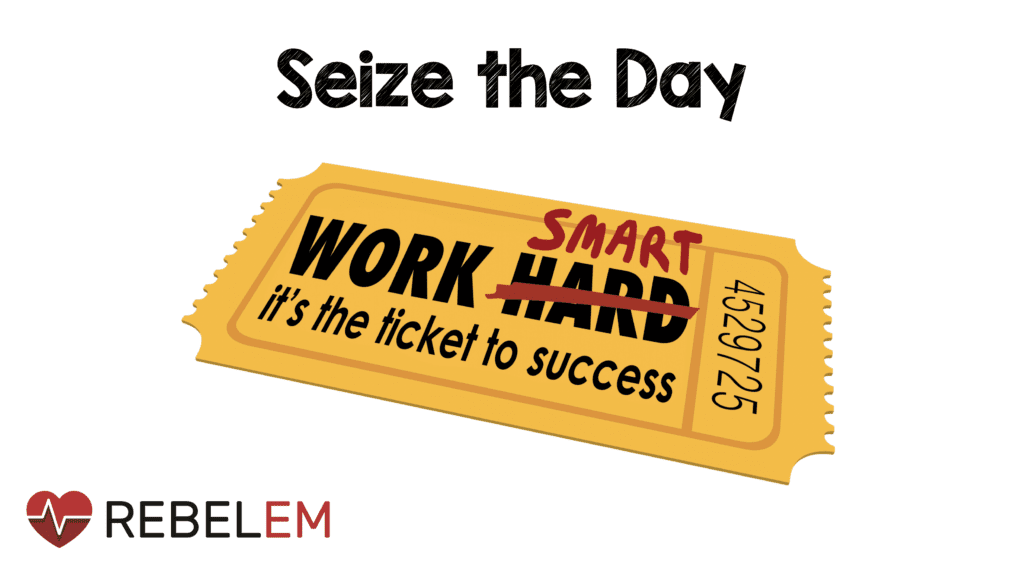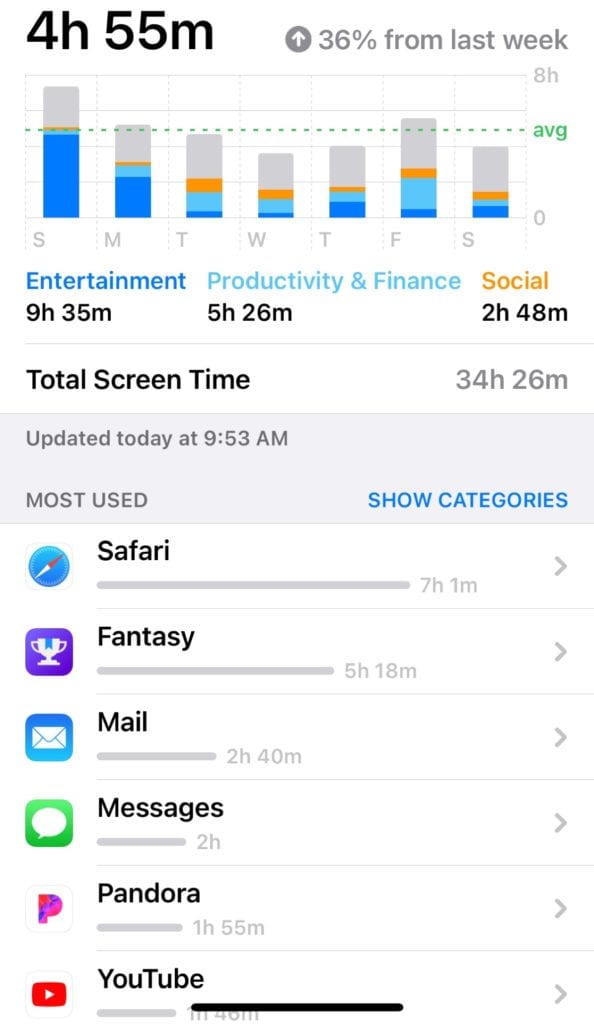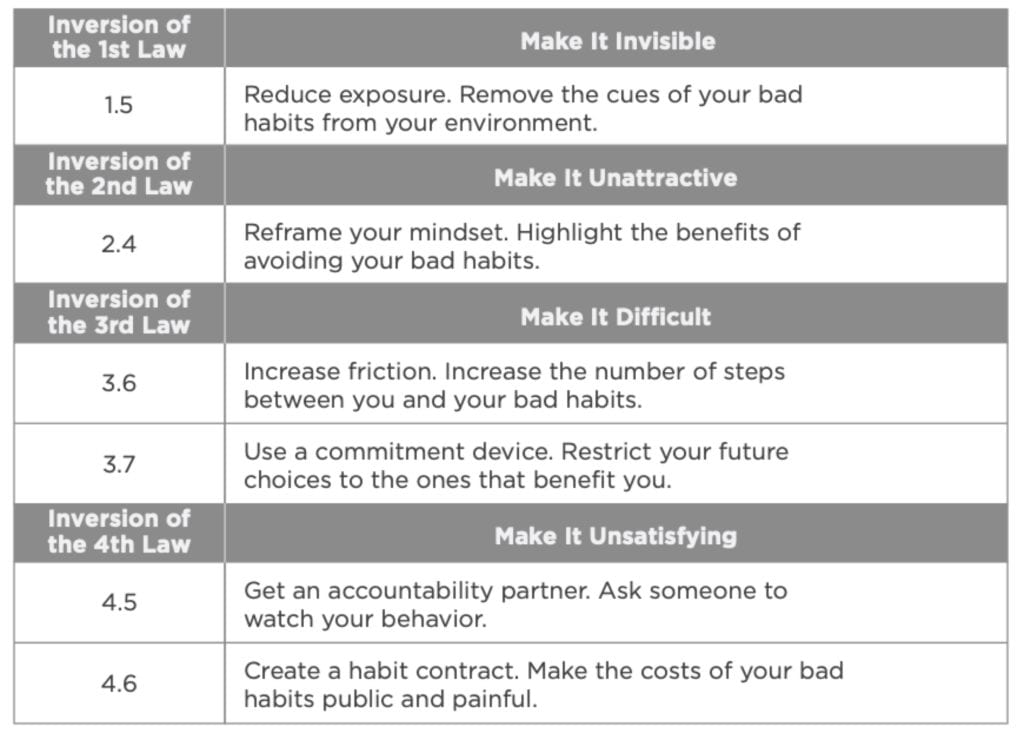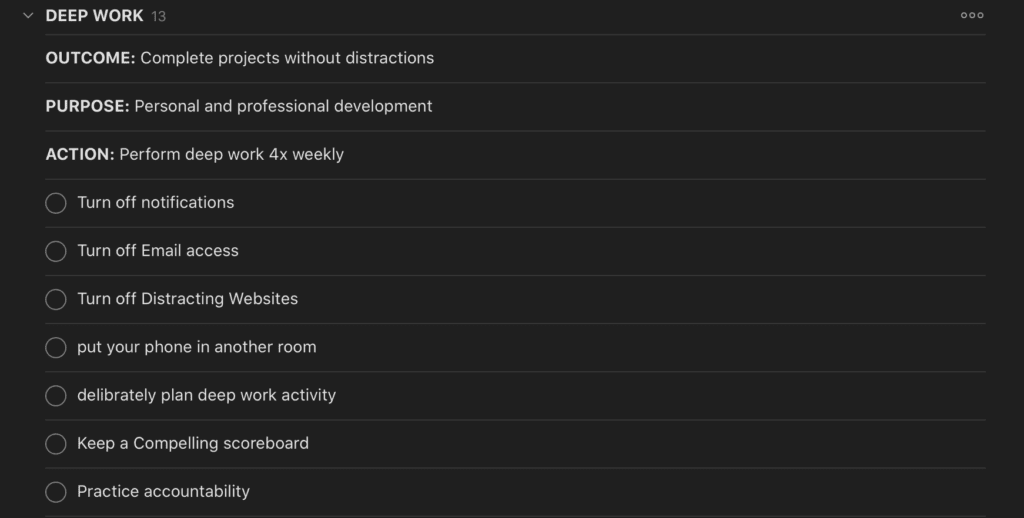
— Unknown Author
Since medical school, I often wished there were one or two extra hours in the day that only I was aware of. The strain of balancing school, family, friends, and hobbies was challenging and barely manageable. That strain increased exponentially when my family grew, and my professional desires and responsibilities grew as well.
I was fortunate to participate in a longitudinal faculty development fellowship at my home shop, where Dr. Anand Swaminathan introduced me to David Allen’s Getting Things Done. I’ve enjoyed numerous books, blog posts, podcasts, and videos on productivity within the last year. It’s probably no coincidence that my productivity has increased at the same time. Each reference provides a unique instrument, but there are similarities. As I’ve become more productive and busier, these tools allow me to stay balanced and keep stress at a minimum. Remaining organized and focused are top priorities.

Time on the device was not the most crucial factor. More importantly, it was not an accurate reflection of my priorities. I am a husband, a father, a friend, and I have many personal and professional interests both within medicine and outside of it. What could I do with one or two more hours in the day? If you find value in these many apps and devices, that’s great. But if, like me, you’re compulsively checking email, fantasy sports, or another social media app, it may be time to develop a healthier relationship with your digital tools.
These apps utilize dopamine drive feedback loops, similar to what we see in gambling and drug addiction. The likes, shares, mentions, and retweets all deliver a small hit of dopamine and keep us fiending for more. This post is not meant to be a diatribe on social media. That information is already abundantly available. Instead, I hope to provide some actions I have found useful to help seize the day.
In “Atomic Habits,” James Clear tells us that disciplined people do not have more willpower. They are just better at avoiding temptation. He states: “Disciplined people are better at structuring their lives in a way that does not require heroic willpower and self-control.”
Clear explicitly lays out steps to help break bad habits.

Since taking back control of my day, I noticed a dramatic shift in my attention. I’m more engaged when spending time with family and more focused when working on projects. I have more time to participate in personal hobbies and reconnect with friends. My screen time went from 5 hours daily to under 2 hours. Previously, I checked email three times hourly. I now allow myself to process email twice daily, once mid-day and once more in the evening. More importantly, my screen time more accurately represents who I wish to be.
NEXT ACTIONS:
Make it Invisible:
- Perform a digital cleanse.
- Delete unused apps
- Delete distracting apps
- Disable unnecessary notifications from apps
- Move junk mail to spam and unsubscribe
- If deleting an app is not possible (like for email), take it off the home screen.
- Put your phone on silent, especially when working on projects.
- Keep your phone in another room.
- Fill your home screen with apps and tools that represent the person you wish to be
Make it unattractive: Highlight the benefits of avoiding bad habits.
Tell yourself:
“I will have more time to spend with family and friends, reading, traveling, writing, exercising, etc., if I spend less time distracted with [________].”
Make it Difficult: Increase friction and increase the number of steps between you and your bad habits. Use a commitment device. Restrict your future choices to the ones that benefit you.
- Use the phone browser instead of the app, which is a bit more cumbersome.
- Delete passwords from the password manager and enter them manually whenever you decide to use a distracting site.
- The added steps may be enough to break the habit or make you more conscious of the action.
- Create a schedule when you will use apps and sites and use a site blocker such as Freedom (or others) to restrict access.
- Many of these apps cross platforms and can be used on your phone, computer, and tablet.
- Consider going analog when working on projects and use only paper and pen.

References:
- MulliganBrothers. PUSH THROUGH THE PAIN – MOTIVATIONAL VIDEO. YouTube, 29 July 2017, [Link is HERE]
- Allen, David. Getting Things Done. Penguin, 2001. [Link is HERE]
- Scott Weingart. EMCrit Podcast 136 – Getting Shit Done. EMCrit Blog. Published on November 3, 2014. Accessed on December 7th 2020. Available at [Link is HERE]
- Scott Weingart. EMCrit Wee – Getting Things Done 2019 Update. EMCrit Blog. Published on January 16, 2019. Accessed on December 7th, 2020. Available at [Link is HERE]
- “EM Over Easy Episode 20 #GettingThingsDone from EM Over Easy | Podcast Episode on Podbay.” [Link is HERE]. Accessed 7 Dec. 2020.
- Salim Rezaie, “Getting Things Done in a Hyperdistracted World”, REBEL EM blog, May 3, 2018. Available at: [Link is HERE]
- Clear, James. Atomic Habits. Avery, 2018. [Link is HERE]
Post Peer Reviewed By: Anand Swaminathan, MD (Twitter: @EMSwami) and Salim R. Rezaie, MD (Twitter: @srrezaie)



